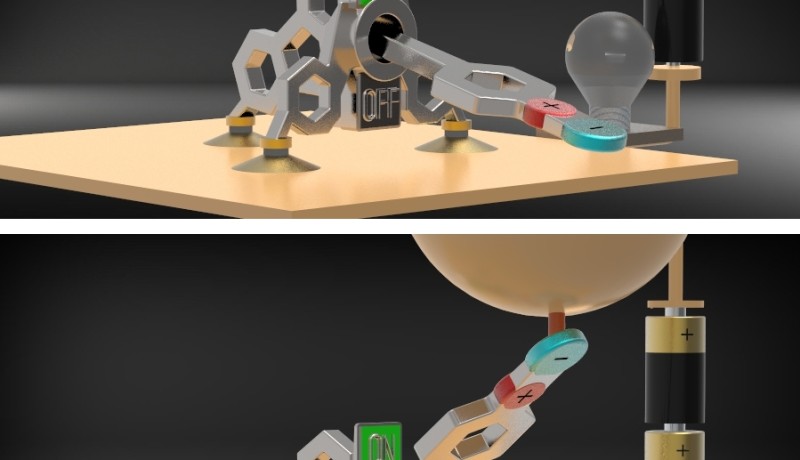Reliable molecular switch
on

Nanotechnology repeatedly breaks new records in the area of miniaturization. However, there are physical limits when reducing the size of electronic components and these will be reached in the near future. This means that new materials and components will be required – and it is here where molecular electronics will play a role. Researchers from the Karlsruher Institut für Technologie (KIT) have succeeded in developing a molecular toggle switch, which will not only remain in the selected position, but can also be switched as often as desired without any deformation taking place.
‘By replacing conventional silicon-based components, e.g. a switch, by individual molecules, future electronic circuits might be integrated on a space smaller by a factor of 100,’ according to Lukas Gerhard of the Institute of Nanotechnology at the KIT.
The basic structure of the electromechanical switch consists of a few carbon atoms. Three sulfur atoms form the 'feet' that are fixed to a smooth gold surface. The toggle lever ends in a nitrile group with a nitrogen atom. The switch toggles when a voltage is applied. The resulting electric field exerts a force on the charge of the nitrogen atom. In this way, contact to a second electrode (in the experiment that was the gold tip of a scanning tunneling microscope) is established.
The complete switch measures not more than a nanometer. For comparison: The smallest structures used in semiconductor technology are 10 nm in dimension.


Discussion (0 comments)